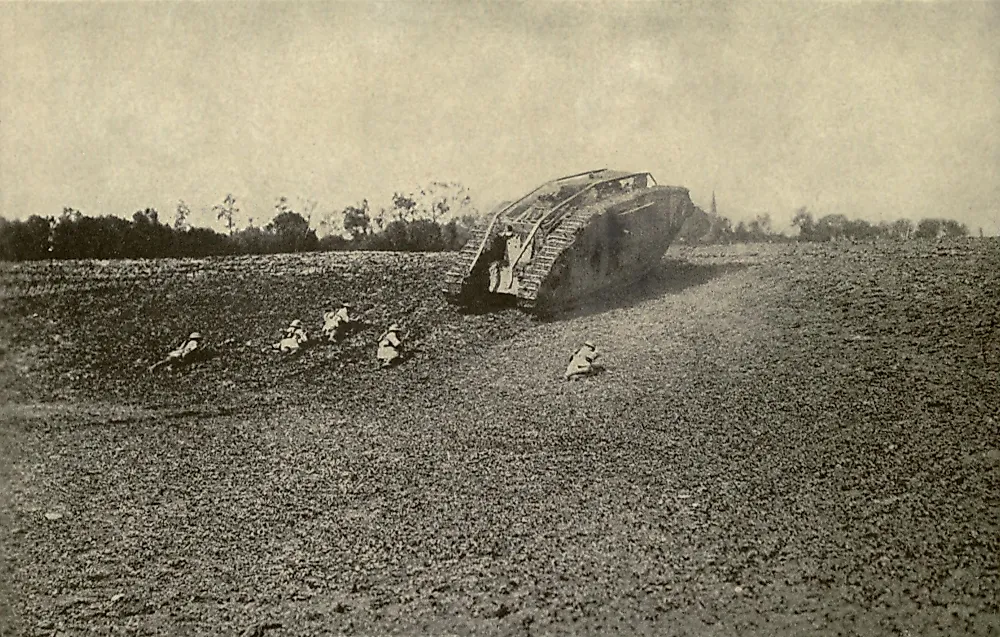What Was the Battle of Cambrai?

The Battle of Cambrai, also known as the First Battle of Cambrai, is one of the most significant events of World War I. It is also famous for the first large-scale use of tanks and artillery in a warfare which led to a big change in war strategy. The Battle of Cambrai is marked as a tremendous display of use of technology and tactical techniques by the British army. On the other hand, it is also known for the biggest counter strategy by German Special Forces since the beginning of World War I was charged up with infiltration tactics.
Background to the Battle of Cambrai
In late 1917, the British Army decided to attack Hindenburg Line (German Defensive position) at Cambrai in France. The main objective of this offensive was to gain control of the area and the destruction of Hindenburg Line to weaken German strength in the West Front. After detailed consideration, the British army decided to attack German forces with a new strategy using a combination of artillery-infantry tactics and a sizeable engagement of tanks.
Surprise Attack
On November 20th 1917, the British army attacked German forces with two Corps and 378 battle tanks. It was a surprise attack precisely executed and it destroyed the strong defensive line of the Germans to a great extent. The British forces dominated the battle on the first day of attack; they advanced around four miles inside the Hindenburg Line and captured more than seven thousand German soldiers as prisoners. Even the British Government celebrated and highlighted its achievements to boost public morale.
Contrary to all these achievements, the first day of the battle also revealed major mechanical malfunction in the British Mark IV tanks, as almost half of the British tanks went non-operational. Moreover, the British army also failed to exploit their achievements properly. Due to lack of reinforcement and unreliability of Mark IV tanks, the British Forces failed to advance effectively in the following days of the attack.
For the next week, the British Army concentrated on taking over control of Bourlon Ridge from German Forces for strategic gains. This resulted in a heavy battle between both the parties; finally, on November 27th 1917, the British Army successfully took control of more than ten kilometers along the Ridge.
German Counter Attack
Angered German forces planned a surprise counterattack to regain control over the Bourlon Ridge and to push British forces out of the Hindenburg Line. On November 30th 1917, the German Army executed their counterattack using their highly trained storm troopers. The German Special Forces applied successful infiltration tactics to destroy the British defense line. Successful ground operations, effective infantry support, and timely reinforcement helped German forces to push the British forces towards their previous positions. By December 7th, 1917, the German forces successfully forced the British Army to retreat to their original position.
Aftermath and Casualties
It is estimated that the British forces suffered 44,000 casualties and lost 179 tanks in the Battle of Cambrai. The German forces also faced 45,000 casualties and a sizeable damage to artillery and defense installations.
The British Army displayed a tremendous piece of advanced strategy; the use of large-scale tanks took the warfare tactics to a new level that also signified the role of artillery in battles. The Battle of Cambrai highlighted the effective use of infiltration tactics and counter-strategies by both the forces.











